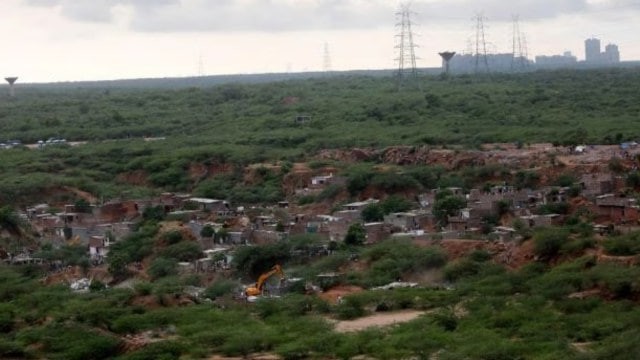Description

Source: Indian Express
Disclaimer: Copyright infringement not intended.
Context
- The Gujarat Forest Department is translocating spotted deer and sambar from Gir Forest to Barda Wildlife Sanctuary to enhance the prey base for Asiatic lions and support their long-term conservation.
- Barda Wildlife Sanctuary is a potential habitat for Asiatic lions due to its ecological conditions and vegetation, making it a suitable site for lion relocation and natural dispersal.
Details
Key Points
- The translocation of prey species like spotted deer and sambar is crucial for maintaining the ecological balance and supporting large carnivores like Asiatic lions in newly designated habitats.
- The presence of a low prey base in Barda Wildlife Sanctuary necessitates the augmentation of herbivore populations to ensure the successful settlement and sustainability of relocated Asiatic lions.
Translocation to Barda Sanctuary:
- Barda Wildlife Sanctuary offers a habitat with ecoclimatic conditions and vegetation similar to Gir Forest, making it conducive for the natural dispersal and settlement of Asiatic lions.
- The translocation initiative aims to create a second home for Asiatic lions, facilitating their conservation and reducing the risk of overpopulation and resource depletion in Gir Forest.

What Makes Barda Sanctuary Unique for Translocation:
- Barda Sanctuary has a habitat resembling many parts of Gir Forest, providing a familiar environment for Asiatic lions.
- Its historical significance as a former habitat for Asiatic lions until 1879 supports the natural recolonization and conservation efforts.
Barda Wildlife Sanctuary:
- Location and Area: Barda Wildlife Sanctuary spans 192.31 sq. km and is located about 100 km from Gir Forest in Gujarat's Saurashtra region.

- Ecological Significance: The sanctuary's ecoclimatic conditions and vegetation composition are similar to Gir Forest, making it a suitable habitat for Asiatic lions.
- Biodiversity: Barda hosts species like blue bulls, wild boars, peafowls, and now translocated spotted deer and sambar to support the lion population.
- Historical Context: Barda was known for its Asiatic lion population until 1879, highlighting its potential for successful lion recolonization and long-term conservation.
- Conservation Efforts: The Gujarat Forest Department's initiatives, including the establishment of an Asiatic lion gene pool centre, aim to enhance wildlife conservation and biodiversity in Barda.
- Challenges and Solutions: Addressing the low prey base and ensuring sustainable prey populations are crucial for the sanctuary's success in supporting relocated lions.
Sources:
Indian Express
|
PRACTICE QUESTION
Q. Consider the following statements about Barda Wildlife Sanctuary and Asiatic Lion conservation:
1.The Gujarat Forest Department is translocating spotted deer and sambar to Barda Wildlife Sanctuary to improve the prey base for Asiatic lions.
2.Barda Sanctuary offers a similar habitat unsuitable for the natural dispersal of Asiatic lions.
3.The presence of a historical Asiatic lion population in Barda until 1879 indicates its potential for successful recolonization efforts.
Which of the statements given above are correct?
(a) 1 and 2 only
(b) 2 and 3 only
(c) 1 and 3 only
(d) 1, 2 and 3
Answer: (c)
|













